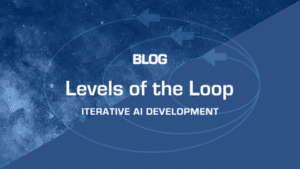In the evolving world of AI, semantic chunking has emerged as a powerful technique to improve machine comprehension of human language. It helps bridge the gap between mere word prediction and proper contextual understanding, especially in domain-specific applications. At Jaxon, we leverage this method extensively within our DSAIL (Domain-Specific AI Language) technology, creating guardrails for generative AI outputs to ensure accuracy, especially in high-risk and regulated environments.
emerged as a powerful technique to improve machine comprehension of human language. It helps bridge the gap between mere word prediction and proper contextual understanding, especially in domain-specific applications. At Jaxon, we leverage this method extensively within our DSAIL (Domain-Specific AI Language) technology, creating guardrails for generative AI outputs to ensure accuracy, especially in high-risk and regulated environments.
What is Semantic Chunking?
Semantic chunking refers to the process of breaking down large bodies of text into smaller yet meaningful units (chunks), often based on their roles or concepts within the sentence. This allows AI systems to understand context, relationships, and meaning better than just processing words in isolation. The method enhances machine understanding by focusing on the context and meaning behind words and phrases rather than their syntactic structure. Here’s a simplified explanation of how it works:
- Sentence Splitting: The text is first divided into individual sentences.
- Vector Embedding: Each sentence is converted into a vector representation that captures its semantic meaning.
- Chunk Formation: Sentences are grouped into chunks based on semantic similarity, often using some similarity measure.
- Contextual Understanding: These chunks allow a deeper understanding of the text, enabling more accurate responses and analyses.
Choosing the suitable model for semantic chunking involves considering several factors to ensure the model aligns with specific needs and use cases. Here are some key aspects to consider:
- Choosing the appropriate transformer model for the target text structure and length.
- Vector embedding quality of chunks in the context of domain-specifics to improve accuracy and relevance.
- Model context window sizing to ensure chuck size fits within to avoid truncation and loss of information.
- Computational efficiency and scalability to minimize latency and cost even with large volumes of text.
Why Semantic Chunking Helps Address the Hallucination Problem
The hallucination problem – when large language models (LLMs) like ChatGPT generate inaccurate or fabricated responses – poses a severe challenge to AI reliability. At Jaxon, we mitigate this by embedding semantic chunking into our DSAIL framework. Here’s how it plays a critical role:
- Enhanced Contextual Understanding: DSAIL can better recognize the relationship between terms and concepts by focusing on semantic units and making logical connections across large text bodies.
- Guardrails for Generative AI: Instead of relying on the raw output of language models, DSAIL’s chunking processes enable deeper verification. Each chunk is checked for factual integrity and logical consistency within the broader context, reducing errors.
Improving Knowledge Base Integration: Our system also leverages semantic chunking to effectively query and retrieve information from domain-specific knowledge bases (KBs), enhancing the AI’s ability to cross-reference facts and make accurate inferences.
Real-World Applications
Using semantic chunking within DSAIL, our platform excels in several applications:
- Legal Document Parsing: DSAIL helps break down complex legal language, extracting meaningful clauses and verifying their accuracy against a knowledge base.
- Financial Statements Analysis: AI can parse financial documents, identifying critical covenants while cross-checking them with legal documents like bond indentures and loan agreements.
DSAIL in Industry
At Jaxon, semantic chunking pushes AI toward a more profound understanding and reliable outputs. By incorporating this method into our DSAIL framework, we address the hallucination problem and set a new standard for AI verification and validation in domain-specific applications.
In industries where precision is paramount, semantic chunking ensures that AI models not only understand but also prove their understanding, making them reliable partners in decision-making processes.
Want to learn more? Contact us!


